
Kathleen Frederickson, “British Writers on Population, Infrastructure, and the Great Indian Famine of 1876-8”
This article examines British writing about the 1876-8 famine in southern and western India. In British newspapers and journals, the turn to thinking about famine in terms of the total population obscured the extreme variations in food access that worsened with rising economic inequality. When the British press in the late-1870s turned to human causes of famine, they either argued that India’s population overburdened India’s land, or suggested that more rail construction would prevent enough deaths sufficiently to mitigate British responsibility for famine conditions. The turn to population-based arguments helped either to perpetuate the belief that famine was a quasi-natural part of India or to parse the sudden increase in the frequency and severity famines in India under British rule.
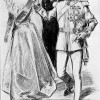
Nicholas Daly, “Anthony Hope’s The Prisoner of Zenda (April, 1894) and the Rise of Ruritanian Fiction”
Anthony Hope’s bestseller of 1894, The Prisoner of Zenda, inspired a subgenre of adventure romances set in imaginary, semi-feudal European countries, of which Ruritania is the original. English and later American protagonists stumble into plot-driven narratives that usually feature some combination of schemes against the throne, doubles or mistaken identities, swordplay, and love at first sight. Since the 1890s, Ruritanian backdrops have been reworked for a variety of purposes, from Balkan spy novels, to interwar operetta, to Cold War satires, in such fictional territories as Ixania, Krasnia, and Grand Fenwick.
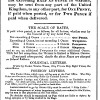
Susan Donovan, “How the Post Office and Postal Products Shaped Mid-Nineteenth-Century Letter-Writing”
In an age of electronic communication it is easy to forget the vital role that letter-writing played in people’s everyday lives in the nineteenth century. Critical attention has tended to focus more on the communicative function of letters than on what is often considered as the more mundane material aspects of letter exchange such as the postal service or the type of stationery used. This article explores the impact of mid-century postal reforms, improved transportation and new postal products on the letter-writing practice and epistolary relationships of Arthur Hugh Clough. My reasons for making Clough the central case study of this piece are two-fold: firstly, because of the large body of correspondence that exists between him and his American literary friends over the period of the mid-nineteenth century (c.1847-1861); and secondly, Clough’s interest in, and innovative use of the epistolary form in his poetry. The article underlines the significance of the postal revolution for Clough’s life and work, which can hardly be overstated. The greatly improved transatlantic mail service enabled him to keep in regular contact with his closest friends and publishers and to send them, over a period of several years, all the revisions and additions to his most important work: Amours de Voyage, published for the first time in the US in 1858; his acclaimed translation of Plutarch’s Lives (1859) and the definitive edition of his collected poems, published posthumously in the USA in 1862. The article also highlights instances where material circumstances—the curtailment of the transatlantic mail service, or lost and delayed letters—had an adverse effect on Clough’s correspondence and on his publishing projects. On this point, I draw parallels with Clough’s epistolary poetry—most notably Amours de Voyage—whose form and plot clearly illustrate the importance he attached to the medium of correspondence. The article also demonstrates Clough’s awareness of the role played by postal products in the construction of an “epistolary self”—another aspect of materiality that is reflected in his creative work. Clough is the central figure of this study but I have widened the focus in some places to include some apposite quotations from the Brownings’ correspondence and Carlyle’s letters to demonstrate the far-reaching effects of the material aspects of letter-writing on the correspondence culture of the time.
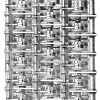
Roger Whitson, “The Difference Engine: 1832, 1855, 1876, 1991, 2002, 2008”
The difference engine is a case study in what media archaeologists see as a diversity of temporalities entangling the production and functionality of technological media. Only an unfinished prototype, what was called “Babbage’s beautiful fragment” existed of Babbage’s designs during his lifetime. Even so, many machinists created their own variations of the difference engine after Babbage’s death. This phenomenon, and the many troubles Babbage himself ran into regarding the materials used to create the difference engine, demonstrates that the machine’s functionality exceeded its inventor’s intentions and awareness.
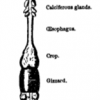
Anna Henchman, “Charles Darwin’s Final Book on Earthworms, 1881”
This article focuses on the publication of Darwin’s final book (1881) in the context of Darwin’s larger attempts to resist the habitual anthropocentrism of human beings. It begins with Darwin’s discussion of animal cognition and the senses of worms. It concludes with his emphasis on the significant effects worm digestion has on the landscape and the fertility of the earth. The article links Darwin’s Worms Edwin Abbott’s 1884 novella Flatland, arguing that both texts are engaged in dismantling human perceptions that stem from possessing a highly visual brain, and that both throw doubt on the belief that a single objective world exists independent of particular observers.

Bryan B. Rasmussen, “Invertebrate Psychology before and after Darwin”
In his B Notebook on Transmutation (1837-38), Charles Darwin speculated that the “introduction of man” on the evolutionary scene was “nothing” compared to the insect, which he considered “the first thinking being.” More than any other class of life in the eighteenth and nineteenth centuries, insects and other invertebrates raised questions about the origins of mental experience and about the relationship between human and nonhuman nature. Their minds represented scientific insight at its limits, where traditional modes of observation and empirical experiment gave way to less certain tools of analogy and thought experiment. Darwin’s Origin of Species (1859) provides a useful historical touchstone for the evolution of these analogies and thought experiments, having constrained the field of plausible analogy from one that included physiology, philosophy, and theology, to the central analogy of common ancestry, or the shared evolutionary history of organisms. However, while Darwin’s theory of descent may have displaced other analogies, it did not replace them, and well into the late-nineteenth and early-twentieth centuries, invertebrate minds continued to inspire a variety of both novel and relic assumptions and methods for examining mental affinities with our spineless distant cousins.
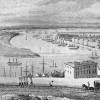
Carolyn W. de la L. Oulton, “‘Coquetting amid incredible landscapes’: Women on the River and the Railway”
The opening of the first direct railway line from London to the Kent coast in 1862 challenged traditional dichotomies between town and country, and contributed to a growing nostalgia associated with the river. Fin-de-siècle writers used the apparent opposition between rail and river, city and country, to ask new questions about the place of women in a rapidly changing world; the transition to a new century further strained the traditional dichotomy between feminised pastoral and masculinised industrial, a tension reflected in the problematic portrayal of rail and water in the work of E. Nesbit.

Lara Kriegel, “On the Death—and Life—of Florence Nightingale, August 1910”
This essay examines the death, and the life, of Florence Nightingale, the great nursing heroine of the Crimean War. An eminent Victorian, Nightingale passed away at the ripe old age of ninety in 1910, at a time when Britain was witnessing great internal strife and facing looming international tension. By that moment, the Crimean War was a thing of the distant past. Even so, Nightingale’s death served as a national tonic. It allowed mourners to rekindle the myths of Nightingale’s lifetime that had unified a ravaged nation in the wake of the Crimean War. Nightingale’s most important reforming efforts, which included nursing education, army improvement, and sanitary reform, both in Britain and in India, would postdate the Crimean War. However, the image of a young Nightingale ministering to the troops in the Crimea would remain the dominant one, not just in her life, but at her death as well. As it assesses the death and life of Nightingale, this essay focuses on two moments of celebrity and mythmaking in the long career of the heroine: the making of her legend in the Crimea and its resurrection at her death. It follows earlier literature, both generated during the nineteenth century and written by those who study it, establishing Nightingale as the avatar of Victorian womanhood. Accordingly, it seeks to understand Nightingale’s passing as a belated death knell to the Victorian age.

Carol Senf, “‘The Fiddler of the Reels’: Hardy’s Reflection on the Past”
While Thomas Hardy was invited to submit something to a special number of Scribner’s Magazine that was published to celebrate the 1893 Chicago World’s Fair, the story he submitted, “The Fiddler of the Reels,” focuses on several characters whose lives are impacted by the Great Exhibition of 1851. The focus on the two world’s fairs might lead readers to believe that Hardy was an advocate of the kinds of scientific and technological progress that such spectacles tended to celebrate. However, Hardy’s story demonstrates the power of more primitive forces and actually undermines such an easy belief in progress. By ending with a character that clearly represents primal forces that are never suppressed, the story demonstrates that the power of the primitive past is never far from the surface and may emerge at any moment to triumph over the representatives of the present.
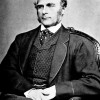
Rebecca N. Mitchell, “Francis Galton’s Hereditary Genius, 1869 & 1892″
Francis Galton’s Hereditary Genius (1869, reissued 1892) claimed to be the first statistical study of genius. Drawing on data culled from biographies and biographical dictionaries of “eminent” figures, he argued that creative and intellectual exceptionalism was measurable and heritable. Despite their claims of objectivity, the two editions demonstrate the extent to which scientific theories of intelligence and creativity were shaped by popular discourse, particularly that surrounding the figure of the Romantic genius and the ascendant Aesthete. This essay explores the influence of cultural notions of genius on Galton’s studies and notes briefly the lasting impact of his methodology, which forms the basis of IQ testing still in use today.
